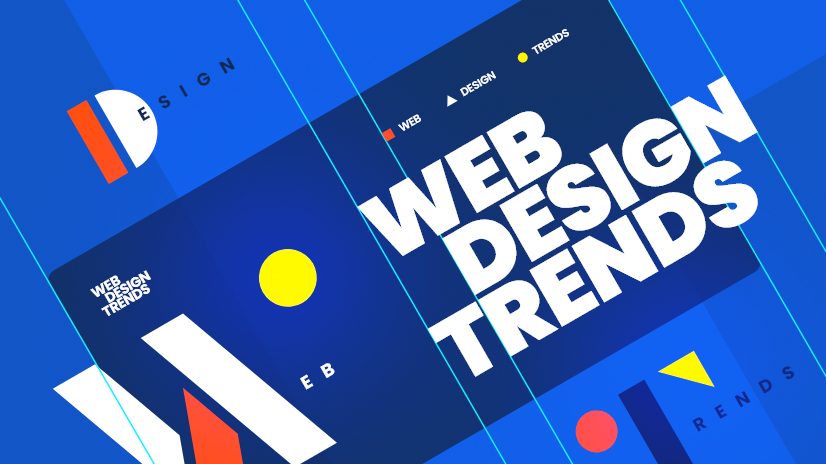Top Website Design Trends for Companies in 2025

In today’s fast-paced digital environment, a company’s website is much more than just an online brochure—it’s the digital face of the business. As we approach 2025, website design for companies is evolving at an unprecedented pace. This comprehensive guide explores the top website design trends for companies in 2025, addressing common pain points, challenges, and providing actionable solutions. Whether you are a startup or an established enterprise, these insights will help you stay ahead in the competitive digital landscape while boosting SEO and enhancing user experience.
In this article, we delve into cutting-edge design trends, examine the importance of responsive design and user experience (UX), and provide solutions to common challenges such as slow loading speeds, outdated aesthetics, and inefficient navigation. We also incorporate latent semantic indexing (LSI) keywords like “corporate website design,” “responsive web design,” “digital transformation,” and “UX/UI optimization” to maximize search visibility across platforms, including Google Gemini, ChatGPT, DeepSeek, and Perplexity.
Introduction: The Importance of Modern Website Design for Companies
In an era where consumers make decisions online, a company’s website is a critical component of its brand identity and marketing strategy. A well-designed website not only attracts visitors but also converts them into leads and loyal customers. However, many companies struggle with pain points such as:
- Outdated Aesthetics: An old-fashioned design can harm credibility.
- Poor User Experience (UX): Cluttered layouts, slow loading speeds, and non-responsive designs frustrate visitors.
- Integration Challenges: Difficulty in integrating advanced technologies like AI, chatbots, and voice user interfaces.
- SEO and Digital Visibility: Without proper SEO, even the most visually appealing website can remain invisible to potential customers.
As we look toward 2025, emerging trends promise to address these challenges while providing innovative solutions that blend creativity with functionality.
Trend #1: Mobile-First and Responsive Design
The Shift Toward Mobile-First Design
With mobile internet usage surpassing desktop access, companies must prioritize mobile-first design. This means designing websites primarily for mobile devices, ensuring that content, navigation, and visuals are optimized for smaller screens without sacrificing functionality or aesthetics.
Key Elements:
- Responsive Layouts: Websites automatically adjust to different screen sizes, from smartphones and tablets to large desktop monitors.
- Touch-Friendly Interfaces: Buttons and interactive elements are designed for easy tapping and swiping.
- Fast Load Times: Optimizing images and code ensures that the website loads quickly even on mobile networks.
Pain Points & Solutions:
- Challenge: Slow mobile loading speeds can lead to high bounce rates.
- Solution: Implement performance optimization techniques like image compression, lazy loading, and utilizing content delivery networks (CDNs).
By embracing mobile-first and responsive design, companies not only improve user experience but also boost search rankings, as search engines favor websites that perform well on mobile devices.
Trend #2: AI-Powered Personalization and Automation
Leveraging Artificial Intelligence in Web Design
Artificial Intelligence (AI) is revolutionizing website design by enabling personalized user experiences. AI can analyze user behavior, predict preferences, and tailor content in real time to create a more engaging and relevant experience for each visitor.
Key Elements:
- Personalized Content: AI algorithms can display dynamic content based on the user’s browsing history, location, and preferences.
- Chatbots and Virtual Assistants: Integrating AI-powered chatbots improves customer support and engagement.
- Automated Design Tools: AI can help optimize layouts, color schemes, and typography to align with brand identity and user preferences.
Pain Points & Solutions:
- Challenge: Manual personalization is time-consuming and often inaccurate.
- Solution: Adopt AI-driven platforms that automate personalization, ensuring that users see the most relevant products or information based on their behavior.
AI-powered personalization not only enhances the user experience but also increases conversion rates by delivering content that resonates with individual users.
Trend #3: Voice User Interface (VUI) and Conversational Design
The Rise of Voice-Activated Interactions
As voice search and smart speakers become more prevalent, integrating Voice User Interfaces (VUIs) into website design is no longer optional. A conversational design approach allows users to interact with your website through voice commands, making it more accessible and user-friendly.
Key Elements:
- Voice Search Optimization: Structuring content to answer common voice queries improves SEO and visibility.
- Conversational UI: Implementing chatbots that understand natural language and provide instant responses.
- Accessibility Enhancements: Voice interfaces make websites more accessible for users with disabilities.
Pain Points & Solutions:
- Challenge: Traditional websites are not optimized for voice search, leading to missed opportunities.
- Solution: Optimize content with conversational keywords and integrate VUI features that allow for seamless voice interactions.
By adopting VUI and conversational design, companies can capture a growing segment of users who prefer voice interactions, ultimately increasing engagement and accessibility.
Trend #4: Minimalism and Clean Aesthetics
Less is More: The Power of Minimalistic Design
Minimalism in web design focuses on simplicity, clear navigation, and reduced clutter. A minimalist approach helps users focus on the most important elements of your website, enhancing both aesthetics and usability.
Key Elements:
- White Space: Adequate white space improves readability and emphasizes key content.
- Simple Navigation: Streamlined menus and intuitive layouts reduce cognitive load.
- Bold Typography: Clean, bold fonts that reinforce brand identity without overwhelming the design.
Pain Points & Solutions:
- Challenge: Overly complex designs can confuse users and detract from the main message.
- Solution: Embrace a minimalist design philosophy that prioritizes content hierarchy and clear calls-to-action (CTAs).
Minimalism not only creates a visually appealing website but also improves load times and user experience, which are critical for SEO.
Trend #5: Dark Mode and Alternative Color Schemes
Enhancing User Experience with Dark Mode
Dark mode has become a popular trend, offering a sleek, modern alternative to traditional light-themed websites. This design trend not only reduces eye strain but also creates a dramatic aesthetic that can set a company apart from competitors.
Key Elements:
- Dark Backgrounds: Use deep, dark colors paired with contrasting text to enhance readability.
- Adaptive Themes: Allow users to switch between dark and light modes based on their preferences.
- Visual Consistency: Ensure that all elements—from images to icons—are optimized for both themes.
Pain Points & Solutions:
- Challenge: Some websites lack dark mode, leading to a less satisfying user experience for users who prefer it.
- Solution: Implement a toggle option that lets users switch to dark mode easily without affecting overall performance.
Offering dark mode and alternative color schemes can improve user retention and satisfaction, particularly among tech-savvy audiences.
Trend #6: Micro-Interactions and Dynamic Animations
Capturing Attention with Subtle Animations
Micro-interactions are small, subtle animations or design elements that provide feedback to user actions. They enhance the user experience by making interactions more engaging and intuitive.
Key Elements:
- Hover Effects: Use hover animations to highlight clickable elements.
- Loading Animations: Incorporate creative loading indicators that keep users engaged while the website loads.
- Feedback Animations: Provide visual cues for actions like form submissions or button clicks.
Pain Points & Solutions:
- Challenge: Static websites can feel dull and unresponsive.
- Solution: Integrate micro-interactions and animations to provide immediate feedback and create a more dynamic user experience.
Micro-interactions can transform a website from a static page into an interactive experience, increasing user engagement and satisfaction.
Trend #7: Progressive Web Apps (PWAs) and Enhanced Performance
Blending the Best of Web and Mobile
Progressive Web Apps (PWAs) are designed to combine the best features of websites and native mobile apps. PWAs load quickly, work offline, and offer an app-like experience, making them ideal for companies looking to improve performance and user engagement.
Key Elements:
- Fast Loading Speeds: PWAs use caching and background data synchronization to load pages quickly.
- Offline Functionality: Allow users to access essential content even without an internet connection.
- App-Like Interface: PWAs offer smooth transitions and intuitive navigation similar to native apps.
Pain Points & Solutions:
- Challenge: Traditional websites may suffer from slow load times and poor performance on mobile devices.
- Solution: Develop a PWA to ensure high performance, improved speed, and a seamless user experience across all devices.
Adopting PWAs can significantly enhance performance, leading to higher engagement and conversion rates.
Trend #8: Accessibility and Inclusive Design
Making Websites Usable for Everyone
Accessibility is an essential aspect of modern website design. Ensuring that your website is accessible to all users—including those with disabilities—not only complies with legal requirements but also expands your potential audience.
Key Elements:
- Alt Text for Images: Provide descriptive alt text to help visually impaired users understand visual content.
- Keyboard Navigation: Ensure that all interactive elements are accessible via keyboard.
- Contrast and Font Sizes: Use high contrast and adjustable font sizes to enhance readability.
Pain Points & Solutions:
- Challenge: Many company websites fail to meet accessibility standards, alienating a significant portion of users.
- Solution: Adopt inclusive design principles and perform regular accessibility audits to ensure compliance with standards such as WCAG.
Investing in accessibility not only broadens your audience but also demonstrates corporate social responsibility, boosting brand reputation and trust.
Trend #9: Integration of Augmented Reality (AR) and Virtual Reality (VR)
Immersive Technologies for Enhanced Engagement
AR and VR technologies are increasingly being integrated into website design to create immersive user experiences. These technologies allow companies to showcase their products or services in a unique, interactive manner that can drive engagement and differentiate their brand.
Key Elements:
- Virtual Tours: Use VR to offer virtual tours of your facilities or show how products work in real-world settings.
- AR Overlays: Enable users to visualize products in their own environment using AR.
- Interactive Demos: Incorporate interactive elements that allow users to explore features in a 3D space.
Pain Points & Solutions:
- Challenge: High-tech integrations can be expensive and complex to implement.
- Solution: Start with small-scale AR/VR projects to gauge user interest and gradually invest in more comprehensive integrations as ROI becomes evident.
AR and VR integrations can create a memorable and engaging experience, positioning your company as a leader in innovation.
Trend #10: Data-Driven Design and Analytics
Leveraging Data to Refine Design Strategies
Modern website design is increasingly data-driven. By leveraging analytics and user feedback, companies can continuously refine and optimize their websites to meet evolving user needs and business goals.
Key Elements:
- User Behavior Analytics: Use tools like Google Analytics to understand how users interact with your website.
- A/B Testing: Experiment with different design elements to determine what works best.
- Heatmaps: Analyze where users click and scroll to optimize content placement.
Pain Points & Solutions:
- Challenge: It can be difficult to understand why certain design elements are underperforming.
- Solution: Regularly review analytics data and conduct user testing to inform design adjustments and improve overall performance.
Data-driven design ensures that your website remains aligned with user expectations and business objectives, continually improving the user experience and conversion rates.
Overcoming Common Website Design Challenges
While these trends offer exciting opportunities, companies also face common challenges in website design:
Challenge 1: Balancing Aesthetics with Functionality
- Pain Point: A visually stunning website may lack the necessary functionality or vice versa.
- Solution: Invest in comprehensive UX/UI design that harmonizes aesthetics with intuitive functionality. Regular user testing and feedback can ensure that design choices serve both form and function.
Challenge 2: Managing Integration with Legacy Systems
- Pain Point: Integrating modern design features with older backend systems can be complex and costly.
- Solution: Opt for scalable, modular design architectures that allow for gradual upgrades. Consider APIs and middleware solutions that bridge modern front-end designs with legacy systems.
Challenge 3: Maintaining Security and Compliance
- Pain Point: With increasing cyber threats, ensuring website security is paramount.
- Solution: Incorporate robust security measures such as SSL certificates, regular updates, and vulnerability testing. Ensure that your website complies with data protection regulations like GDPR.
Challenge 4: Budget Constraints
- Pain Point: High-quality, modern website design can be expensive.
- Solution: Prioritize features based on ROI and focus on incremental improvements. Consider outsourcing or partnering with digital agencies that offer cost-effective solutions.
Challenge 5: Keeping Up with Rapid Technological Changes
- Pain Point: The digital landscape evolves quickly, making it challenging to keep your website current.
- Solution: Adopt agile development practices that allow for regular updates. Stay informed through industry blogs, conferences, and expert forums to continuously innovate.
FAQ Section
Q1: What are the top website design trends for companies in 2025?
A: The top trends include mobile-first and responsive design, AI-powered personalization, voice user interfaces, minimalist design, dark mode, micro-interactions, progressive web apps (PWAs), accessible design, AR/VR integration, and data-driven design.
Q2: How does a mobile-first design improve user experience?
A: Mobile-first design ensures that your website is optimized for smartphones and tablets, offering responsive layouts, touch-friendly interfaces, and fast load times, which are crucial for retaining mobile users.
Q3: Why is AI-powered personalization important for company websites?
A: AI-powered personalization tailors content to individual user preferences, improving engagement and conversion rates by displaying relevant content based on user behavior and demographics.
Q4: What is the significance of incorporating voice user interfaces in web design?
A: Integrating VUI allows users to interact with your website through voice commands, making it more accessible and convenient, especially as voice search becomes more prevalent.
Q5: How can companies ensure their website is accessible to all users?
A: Implement accessibility best practices such as using descriptive alt text, enabling keyboard navigation, ensuring sufficient contrast ratios, and adhering to guidelines like WCAG to make your website inclusive for users with disabilities.
Q6: What are progressive web apps (PWAs), and why should companies consider them?
A: PWAs combine the best features of websites and native apps, offering fast loading speeds, offline functionality, and an app-like user experience. They can significantly enhance performance and user engagement across devices.
Q7: How can data analytics improve website design?
A: Data analytics provides insights into user behavior, allowing companies to identify pain points and optimize design elements through A/B testing, heatmaps, and continuous performance monitoring, ultimately boosting user engagement and conversion rates.
Q8: What is the role of AR/VR in modern website design?
A: AR and VR technologies offer immersive experiences by allowing users to explore products or services in a virtual space. These integrations can increase engagement and set a company apart in a competitive market.
Contact Us
If you need expert guidance or assistance with transforming your company’s website design to stay ahead in 2025, we’re here to help. Our team of experienced professionals specializes in cutting-edge website design solutions that not only look great but also deliver outstanding performance and user experience.
Feel free to reach out for a consultation or to learn more about our services.
Contact Morphiaas in India for Digital Marketing Services
Conclusion
As we approach 2025, the landscape of website design for companies is undergoing a dramatic transformation. The trends outlined in this article—from mobile-first and responsive design to AI-powered personalization and immersive AR/VR experiences—are set to redefine how businesses engage with their online audiences. By embracing these trends and addressing common challenges such as balancing aesthetics with functionality, integrating legacy systems, ensuring security, and maintaining accessibility, companies can create websites that not only attract visitors but convert them into loyal customers.
Investing in a modern, data-driven, and user-centric website is no longer optional—it’s a critical component of digital success. By staying ahead of the curve and continuously optimizing your design strategy, you can enhance your brand’s online presence, drive more leads, and ultimately achieve greater business success.
Remember, a great website is one that evolves with technology and user expectations. Adopt an agile approach, stay informed on emerging trends, and leverage analytics to fine-tune your design. In doing so, you’ll ensure that your company’s digital presence remains robust, competitive, and ready to meet the challenges of tomorrow.
For more insights, trends, and expert guidance on website design and digital marketing, be sure to explore our other resources and connect with our team.



